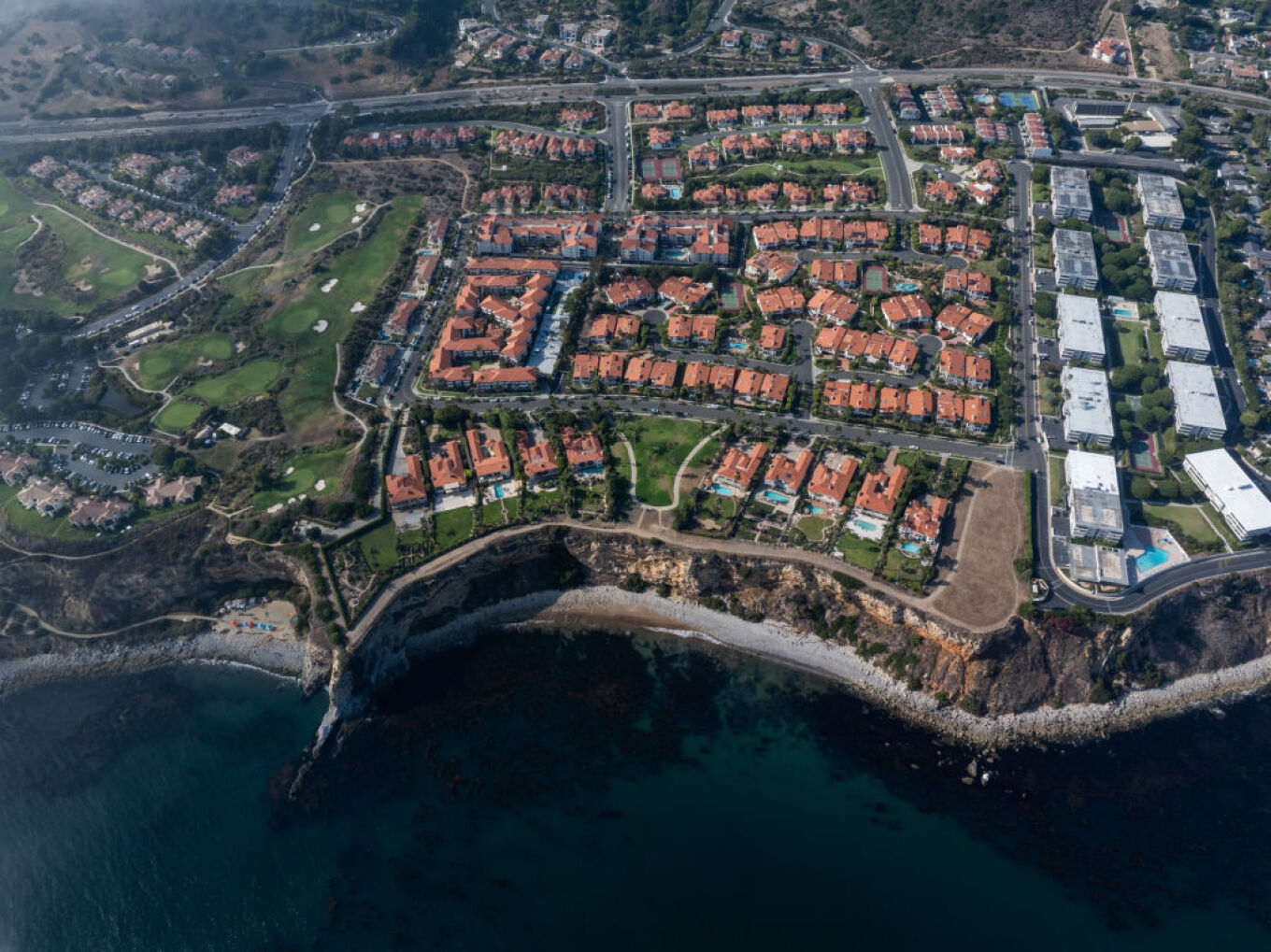The idyllic community of Rancho Palos Verdes, home to 42,000 residents in Southern California, is facing a growing threat that has been developing for decades: landslides
The geology of the area, combined with the historically rainy winters of the past two years, has put luxury homes worth millions of dollars at risk. These homes are perched on cliffs overlooking the Pacific Ocean.
The ground is now shifting at alarming rates, causing extensive damage to homes and infrastructure, forcing authorities to cut power and issue warnings of potential evacuations.
The Palos Verdes Peninsula is known for its landslides. It is composed of fragile shale and soft sandstone, which easily erode due to wind and rain. The dramatic geography, rising nearly 450 meters above the sea, makes it extremely vulnerable to weather conditions and erosion from the Pacific’s waves. These natural processes have been exacerbated in recent years by heavy rainfall, creating dangerous conditions as water seeps into the ground, making it even more unstable.
According to The Washington Post, the consequences of this situation have become dramatic due to the past two winters, which brought historic levels of rainfall. Experts note that these effects may have started months or even years ago, but the situation is now escalating as the ground, which previously moved only a few centimeters per year, is now shifting several meters in a short time. The rainfall has deeply infiltrated the soil, accelerating erosion.
Hundreds of homes in the community of Rancho Palos Verdes in southern #California are without electricity after a utility company shut down power lines following warnings about landslides. #PlanetMatters pic.twitter.com/cAI2zbq1kT
— CGTN Global Watch (@GlobalWatchCGTN) September 4, 2024
Kyle Tourjé, vice president of the engineering firm Alpha Structural, notes that the situation has spiraled out of control, pointing out that there are now only two solutions: either a costly and complex intervention by local, state, and federal authorities or the complete abandonment of the most affected areas. Options for stabilizing the ground are limited, and their implementation is highly uncertain.
Landslides in Rancho Palos Verdes are not a new phenomenon. The area has always been sensitive, with known landslide incidents dating back to the 1950s. The Portuguese Bend area, in the southern part of the peninsula, is an example of an active landslide that has been ongoing for decades, forcing continuous repairs to the road network. However, the current crisis is more severe than ever, threatening hundreds of homes.

The geology of the area is naturally vulnerable. The soil consists of sandstone and shale that are so weak they can even break by hand. At the same time, the subsurface is penetrated by water, creating unstable layers where rocks move.
The persistent rains of the past two winters, influenced by climate change and rising temperatures, have increased soil moisture, worsening the situation. Jonathan Godt from the U.S. Geological Survey emphasizes that the effects of rainfall take months or even years to manifest, meaning that future landslides could be even more catastrophic.
To address the situation, Rancho Palos Verdes received a $23 million grant last year from the Federal Emergency Management Agency (FEMA). The plan involved pumping trapped water from the subsurface in the hope of stabilizing the ground. However, the worsening situation has raised doubts about the project’s effectiveness, with Tourjé stating that the situation is becoming more worrisome by the day.
The Rancho Palos Verdes City Council held an emergency meeting on Tuesday to consider measures such as declaring the area a disaster zone and appealing to California Governor Gavin Newsom to declare a state of emergency for the region. The coming days will be critical as authorities try to protect residents and their properties from further destruction.
Residents of Rancho Palos Verdes, despite the beauty of their landscape, now face a relentless natural threat. The landslides, driven by the effects of climate change and the fragile geology of the area, demonstrate the dangers of living on such unstable ground, with the future uncertain for both the people and their homes.
Ask me anything
Explore related questions





